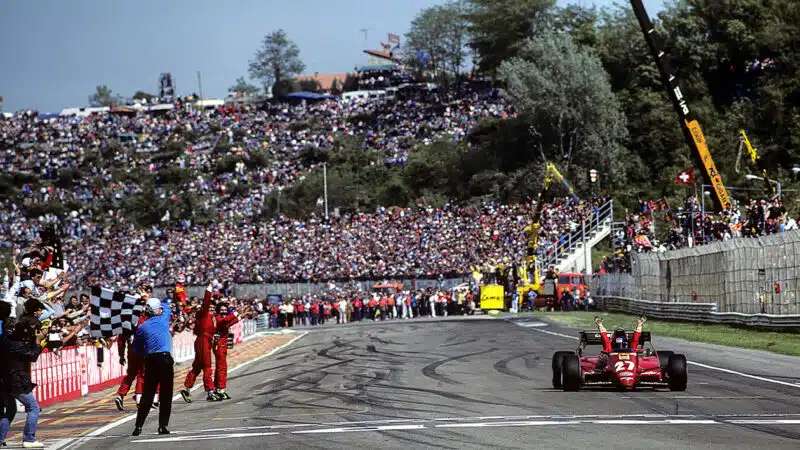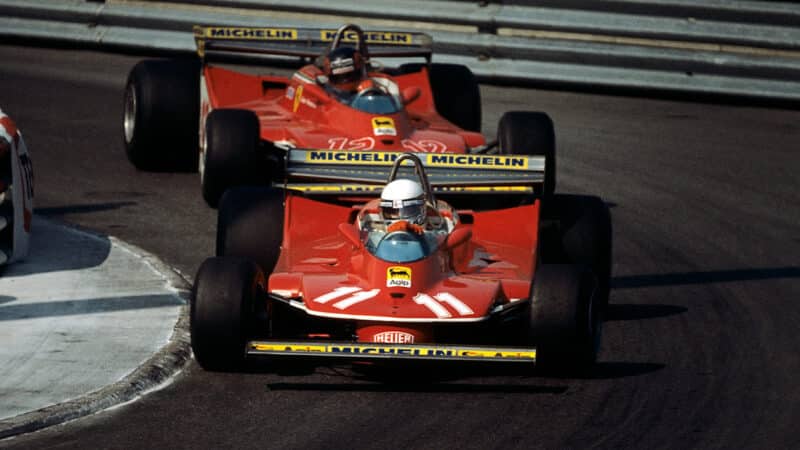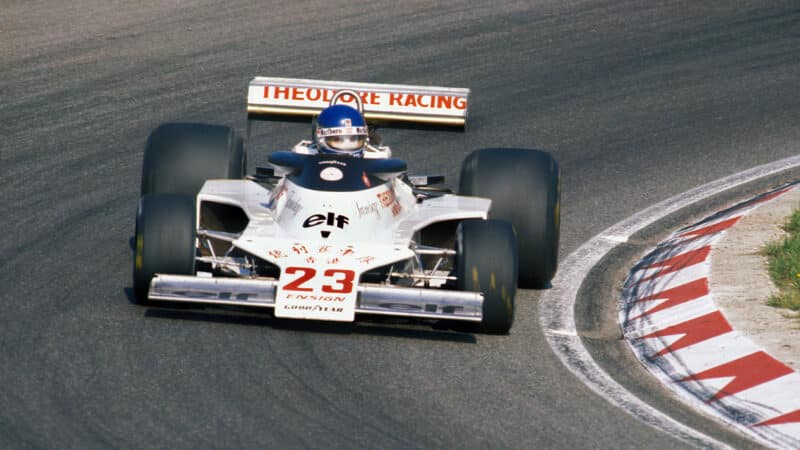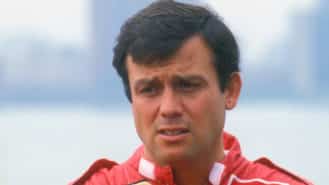So it was that he received offers from both those teams for 1978. He chose McLaren. Ferrari then hired Villeneuve instead, as indeed so would have the McLaren high-ups had Tambay selected the Scuderia ahead of their Anglo-Kiwi team. Tambay’s decision was the wrong one: while the Ferrari 312 T3 was a five-time grand prix winner in 1978 in the hands of Carlos Reutemann (four wins) and Villeneuve (one), the McLaren M26, which had made its F1 debut almost two years before, at Zandvoort in 1976, was hopelessly outclassed. Nonetheless, Tambay raced it to a plucky sixth in Buenos Aires, his McLaren debut, and followed that with good showings at Monaco (seventh), Anderstorp (fourth), Brands Hatch (sixth), Monza (fifth) and Watkins Glen (sixth), scoring the same number of world championship points with it as his super-fast if decreasingly motivated ex-world champion team-mate, James Hunt.
Hunt then fled to Wolf for 1979 – a poor choice that ended in failure and mid-season retirement at the age of just 31 – while Tambay was joined at McLaren by the experienced, intelligent, fast, gutsy and underrated John Watson. The new-for-1979 McLaren M28 was a dog – there are other words, worse words, but ‘dog’ will do for now – and Watson did better with it than Tambay did. Indeed, Patrick abandoned it at Zolder, opting to revert to the now three-year-old M26, and failed to qualify. Two weeks later, at Monaco, he was given an M28B, but the B-spec car was no better than the original shitbox (there, that is the word I avoided above) of which it was supposed to be a more competitive evolution. Again, he failed to qualify. Yes, he DNQ’d at Monaco, which is where our story started, and was the race in which, as a talented and proud Frenchman alongside six other talented and proud Frenchmen, he was most eager to perform well. Worse was to come, for he was forced to sit in the pits on race day while Watson, always impressive on the tortuous, greasy streets of the Principality, drove a mettlesome race to fourth.
Having DNQ-d in two consecutive Francophone grands prix – Belgium and Monaco – Tambay was disconsolate. His next eight grands prix netted five DNFs and no world championship points. After the last of that octet, the season’s final grand prix at Watkins Glen – for which he had qualified 22nd, a second and a half off Watson in P13, then had DNF’d on lap 21 and had watched Watson drive an excellent race to sixth – he was fired. Not only that but, so low had his reputation fallen, he was out in the cold, and out of F1, for 1980.

Can-Am beckoned in 1980. Tambay won six races and the title, although he was third at Riverside (pictured)
DPPI
Nonetheless, he did not waste his year. Granted, it must have hurt him to see his old friends and fellow countrymen Jabouille, Laffite, Pironi and Arnoux all winning grands prix that season – two wins in Arnoux’s case – but Tambay blitzed the 1980 Can-Am championship in Carl Haas’s powerful ground-effect Lola-Chevy T530, winning six of the nine races he entered, and those half-dozen victories, scored as they were in a mighty race car on glorious racetracks (Sears Point, Mid-Ohio, Mosport, Watkins Glen, Brainerd and Trois-Rivieres), restored the spring in Patrick’s step. In 1981 he was back in F1, initially in Yip’s own F1 car, the TY01, and, although the car was not competitive, he drove it well on his debut with the team, at Long Beach, finishing sixth. He followed that a few races later with seventh at Monaco. Even so, his F1 career may or may not have petered out soon after, had not Jabouille, by now a Ligier driver and pushing 40, decided to retire just before the 1981 French Grand Prix, fearing that the leg he had broken in a shunt in Montreal a year previously had not healed sufficiently and being unwilling to put up a below-par performance in his home race. But Tambay, who was selected to replace Jabouille at Ligier, was not able to capitalise on what had at first appeared to be his good fortune: he started eight grands prix for the team in the second half of 1981, and he failed to finish any of them. To be fair, five of those DNFs were caused by factors outside his control – a broken wheel bearing, a clutch failure, a transmission malfunction, a blown engine and a puncture – but three of them could be classified as driver error: a spin-off and two collisions.
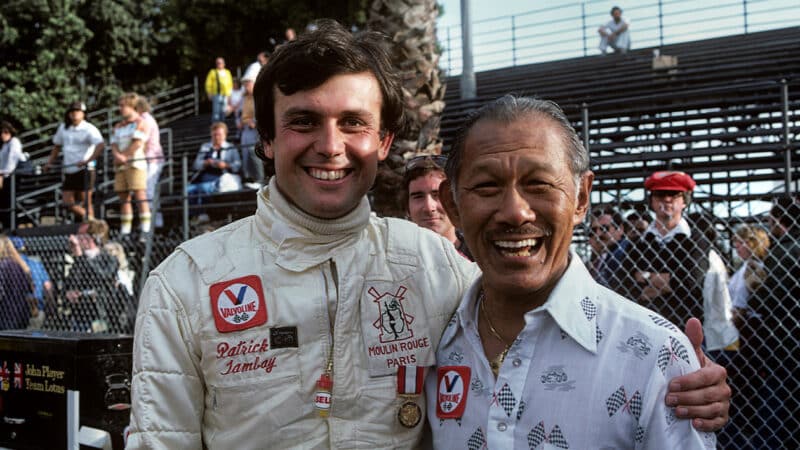
Yip (right) gave Tambay (left) a route back to F1 at Long Beach in 1981
Bernard Cahier/Getty Images
As a result, in 1982, again, he was out of work as an F1 driver, and this time he could not find sanctuary in Can-Am, being reduced to spectator status as the racing season progressed. Once more, he was forced to sit on the sidelines and watch not only his old buddy Pironi win grands prix but also the new French kid on the block, Alain Prost, who kicked off the season with two consecutive victories at Kyalami and Jacarepagua. Worse was to come, for his great friend Villeneuve was killed at Zolder, which tragedy left him bitterly bereaved. A grief-stricken Enzo Ferrari could not bring himself to appoint a Villeneuve replacement for the next three grands prix – Monaco, Detroit and Montreal — but he finally capitulated to the inevitable and drafted in Tambay for Zandvoort, where he finished eighth. Two weeks later, at Brands Hatch, a circuit that the Anglophile Frenchman had always loved, he drove better still, finishing third, not far behind his team-mate Pironi in second, thereby bagging his first F1 podium.
Patrick was getting his mojo back, not that we used that expression in those days. He was fourth at Paul Ricard and Osterreichring, second at Monza, and – yes! – first at Hockenheim, delivering a victory terrifically popular not only as regards himself, a man very well liked in the F1 paddock, but also for Ferrari, whose staff were not only still lamenting the death of Villeneuve three months previously but were now also reeling from shock caused by the violent career-ending shunt that had befallen their team-leader, Pironi, at Hockenheim, the very day before.
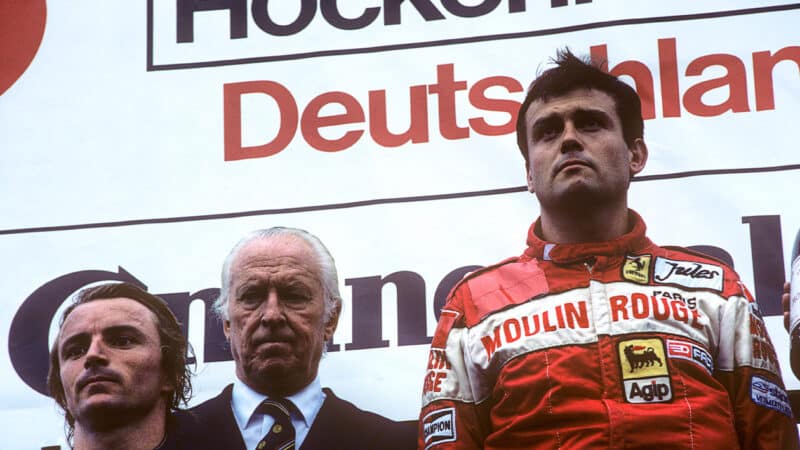
Victory at Hockenheim came in the aftermath of Pironi’s crash and three months after Villeneuve’s death
Bernard Cahier/Getty Images
The following year, 1983, Tambay won at Imola – another emotional victory – driving a Ferrari carrying the number-27 that Villeneuve had made famous and dedicating his win to his still much missed friend. Patrick stood on four further podiums that season and finished fourth in the 1983 drivers’ world championship. The next two years, 1984 and 1985, he raced for Renault, scoring podiums but no wins. And that, apart from a poor 1986 in a ropey Beatrice Lola, was that.
